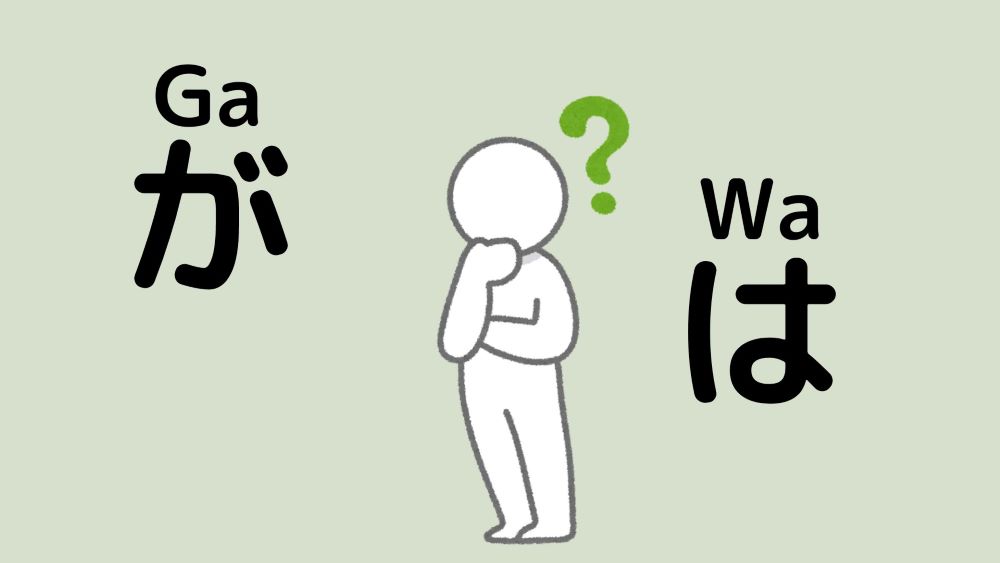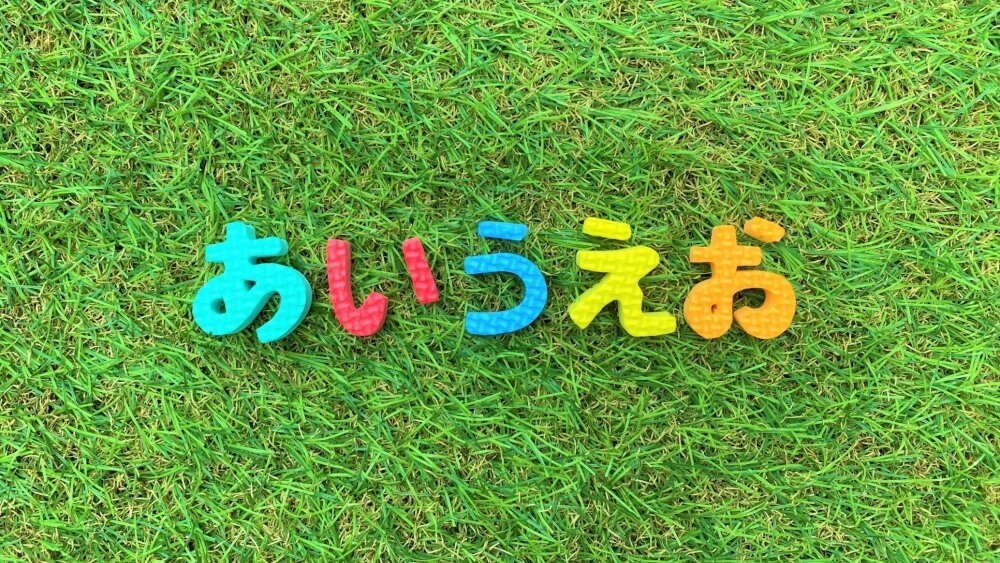When learning Japanese, many foreign learners struggle with the difference between “は” and “が”. While these two particles may seem similar, they serve different purposes in a sentence. In this article, we’ll explain the difference between “は” and “が” in a simple and easy-to-understand way, helping you to use them correctly in your conversations.
The Basic Roles of “は” and “が” Particle
Particle “は”
“は,” which is pronounced [wa], is used to mark the topic of a sentence. This particle is placed after the topic, and followed by information related to the topic. It might be easier to understand if you think of the particle as playing a role similar to “as for” in English.
- 私は学生です。(I am a student.)
私 (I) is the topic, and the sentence is giving information about that topic, saying “I am a student.”
- 私はりんごを食べる。(I eat an apple.)
私 (I) is the topic, and the sentence explains what “I” am doing, which is eating an apple. The focus isn’t on “me” as much as it is on the action.
Particle “が”
“が” is used to mark the subject of a sentence and is often used when you want to focus on who or what is making the action or exists.
- 私が学生です。(I am the one who is a student.)
This sentence focuses on who the student is.
- 私がりんごを食べる。(I am the one who eats an apple.)
The sentence highlights that “I” am the one eating the apple. The focus is on “me” as the person making the action.
- りんごがある。(There is an apple.)
The sentence mentions the existence of an apple.
Using “は” and “が”
Let’s look at a few examples to see the actual differences in usage.
New vs. Known Information
“が” for New Information
When introducing something new or indicating the existence of the things, use “が”.
- 猫が庭にいます。(There is a cat in the garden.)
Providing new information by mentioning the existence of the cat.
“は” for known information
When referring to something that has already been introduced and adding information about it, use “は”.
- 男の子が2人います。1人は背が高いです。(There are two boys. One of them is tall.)
Adding information about the boy previously mentioned.
Judgement vs. Description
“は” for Judgement
Use “は” when the sentence includes the speaker’s subjective opinion.
- あの花はきれいだ。 (That flower is beautiful.)
- 私のお母さんはやさしい。 (My mother is kind.)
“が” for Description
Use “が” to describe an ongoing phenomenon as it is, without adding personal opinion.
- 雨がふっている。 (It’s raining.)
- 太郎が寝ている。 (Taro is sleeping.)
Contrast vs. Exclusivity
“は” for Contrast
“は” is also used to show contrast between two or more things.
- お母さんは優しいが、お父さんは厳しい。 (My mother is kind, but my father is strict.)
Contrasting the differences in the personalities of my mother and father.
- 私はコーヒーを飲みますが、彼は紅茶を飲みます。(“I drink coffee, but he drinks tea.)
Contrasting the difference between my action and his action.
“が” for Exclusivity
Use “が” to indicate that the subject possesses a specific trait or characteristic. This adds a nuance of exclusivity, like “none other than.”
- 私があなたの先生です。 (I am your teacher.)
Emphasising that “I”, not anyone else, am your teacher.
- 会議には佐藤さんがでます。 (It’s Mr. Sato who will attend the meeting.)
Emphasising that Mr. Sato, no one else, is the one attending the meeting.
Scope of the Subject oun
Use “は” when the subject noun relates to the entire sentence, and “が” when it applies only to part of the sentence.
- ねこはよく庭で遊んでいます。(The cat often plays in the garden.)
The subject “ねこ” (cats) relates to both “庭” (the garden) and “遊ぶ” (playing).
- ねこが遊んでいるのを見るのが好きです。(I like watching cats play.)
The subject “ねこ” (cats) does not link to “好き” (liking).
In Questions
In questions, the choice of “は” or “が” depends on what you’re asking about.
- 田中さんは何をしますか? (What will Tanaka do?)
Asking about what Tanaka will do.
- 田中さんは勉強します。(Tanaka will study.)
Explaining what Tanaka will do.
- 誰が来ますか?(Who is coming?)
Asking about the subject.
- 田中さんが来ます。(Tanaka is coming.)
Emphasising “Tanaka” as the subject.
Understanding Through Examples
Example 1
- 雨は嫌いです。(I don’t like the rain.) : Giving an opinion about the topic “rain”.
- 雨が降っています。(It’s raining.): Describing “what” is happening now.
Example 2
- 彼はケーキが好きです。 (He likes cake.): Talking about his preference.
- 私がケーキを作ります。(I will make the cake.): Focusing on “who” is going to make the cake.
Example 3
- 先生は優しいです。(The teacher is kind.) : Talking about the teacher’s characteristics.
- 先生が来ます。(The teacher is coming.): Focusing on “who” is coming.
The particles”は” and “が” are essential topics to learn for accurately conveying your intentions. But, understanding them purely through logic can be quite difficult. So, pay attention to what native speakers say and write, and gradually build your understanding.



